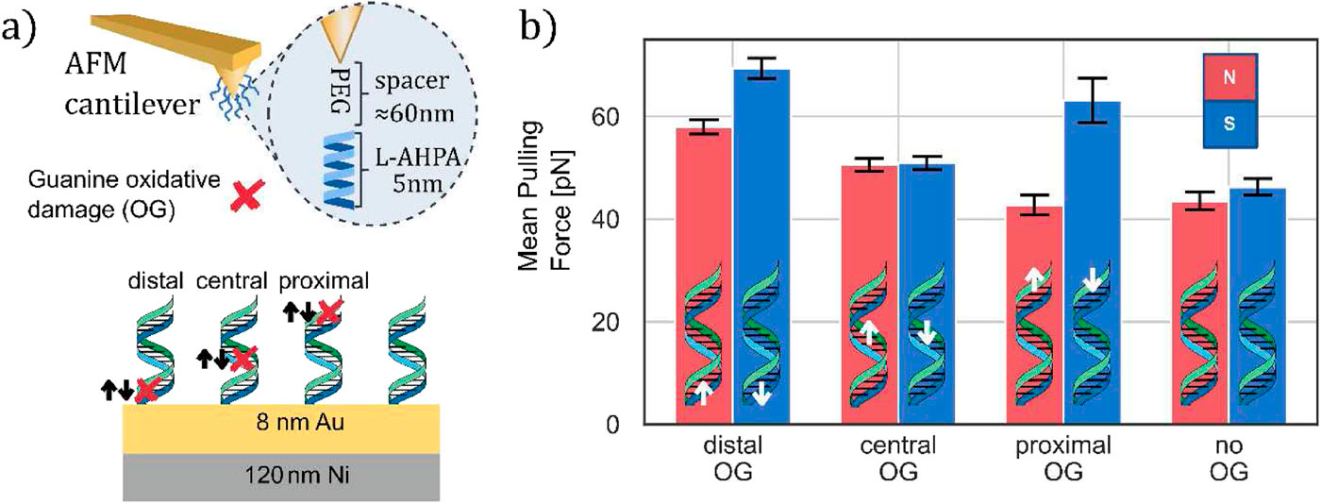We analyze from a theoretical perspective recent experiments where chiral discrimination in biological systems was established using Atomic Force Microscopy (AFM). Even though intermolecular forces involved in AFM measurements have different origins, i.e., electrostatic, bonding, exchange, and multipole interactions, the key molecular forces involved in enantiospecific biorecognition are electronic spin exchange and van der Waals (vdW) dispersion forces, which are sensitive to spin–orbit interaction (SOI) and space-inversion symmetry breaking in chiral molecules. The vdW contribution to chiral discrimination emerges from the inclusion of SOI and spin fluctuations due to the chiral-induced selectivity effect, a result we have recently demonstrated theoretically. Considering these two enantiospecific contributions, we show that the AFM results regarding chiral recognition can be understood in terms of a simple physical model that describes the different adhesion forces associated with different electron spin polarization generated in the (DD), (LL), and (DL) enantiomeric pairs, as arising from the spin part of the exchange and vdW contributions. The model can successfully produce physically reasonable parameters accounting for the vdW and exchange interaction strength, accounting for the chiral discrimination effect. This fact has profound implications in biorecognition where the relevant intermolecular interactions in the intermediate-distance regime are clearly connected to vdW forces.

We analyze from a theoretical perspective recent experiments where chiral discrimination in biological systems was established using Atomic Force Microscopy (AFM). Even though intermolecular forces involved in AFM measurements have different origins, i.e., electrostatic, bonding, exchange, and multipole interactions, the key molecular forces involved in enantiospecific biorecognition are electronic spin exchange and van der Waals (vdW) dispersion forces, which are sensitive to spin–orbit interaction (SOI) and space-inversion symmetry breaking in chiral molecules. The vdW contribution to chiral discrimination emerges from the inclusion of SOI and spin fluctuations due to the chiral-induced selectivity effect, a result we have recently demonstrated theoretically. Considering these two enantiospecific contributions, we show that the AFM results regarding chiral recognition can be understood in terms of a simple physical model that describes the different adhesion forces associated with different electron spin polarization generated in the (DD), (LL), and (DL) enantiomeric pairs, as arising from the spin part of the exchange and vdW contributions. The model can successfully produce physically reasonable parameters accounting for the vdW and exchange interaction strength, accounting for the chiral discrimination effect. This fact has profound implications in biorecognition where the relevant intermolecular interactions in the intermediate-distance regime are clearly connected to vdW forces.
